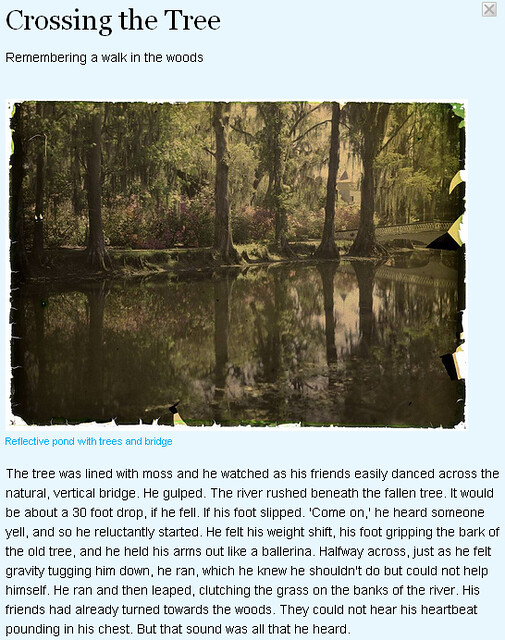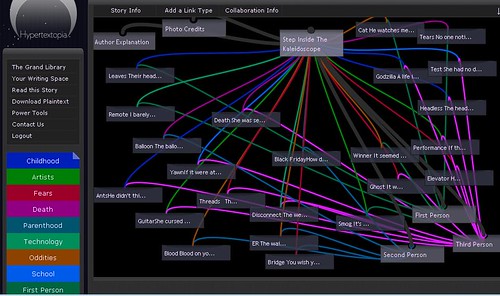I had a friend turn me on to this odd site called Dr. Wicked’s Write or Die, which gives you a time period to write and then prods you forward with your targeted word count with electric cattle prods, zapping hand buzzers … well, not quite. But the site does use colored backgrounds to let you know you are staring at the screen a bit too long, and then begins to remove your words one at a time until you start typing again. At least, that’s what it did in the category that I chose — you can be more forgiving on yourself, or more harsh, too.
(There is a desktop version of this, which costs a requested donation of 10 bucks, and a modified online version that is free. I did the free online version. Some folks are using this as part of the National Novel Writing Month projects to spur them on.)
This could be a killer for some writers who stress over every word but not for me, who writes quick (too quick?) and is happy to plow forward in the draft stage. I actually found it was a neat experience to know I better get things going. I had to move my story forward, and fast, or face the wrath of Dr. Wicked, and I didn’t even know what I was going to write when I started at the site.
I wrote the first line that came to mind because I was writing early in the morning and sleep was not far away — By night, she was wide awake .. — and began.) The story unfolded in literally the ten minutes I had on the clock as I imagined the scene, this character and a possible backstory. I threw the cat into the mix for good luck.
So, I kind of liked the experience. The site let me know that I wrote 326 words in 9 minutes, so I beat the clock (10 minute limit) and exceeded my goal (300 words). Take that, Dr. Wicked!
My Story:
By night, she was wide awake, knowing that her anxiety would not let her sleep. Her day tumbled over her, weaving some strange magic. Her cat purred at her feet. She gently moved, not wanting to disrupt him, too, with her wakefulness. He barely stirred. She felt a bit of resentment now, and poked him with her toe. The cat just rolled over, stretched, and fell back into canine slumber.
She pulled on her slippers. Her toes wiggled to create warmth. The stairs were dark, but she knew every step. The light was unnecessary, although it would not have awoken anyone. It was only her now. Her and the cat. Still, she kept the light off, feigning some sleep pattern that she hoped would eventually lead her back to bed.
The newspaper was folded up on the kitchen table. The headline was no longer visible. She reminded herself that she had done this on purpose. Yet, she could not resist. She took the newspaper and unfolded it out, spreading out the entire two pages on the table before her. She bent over the news, elbows on the table, and read it again. She searched for any clues to the real story behind the story. A former reporter, she knew what to look for in what wasn’t being said.
Even so, the story in the story remained a mystery. She ran her fingers over his headshot and thought how funny it was that he seemed so contained in that little square box. He looked younger than she remembered, and figured the newspaper had grabbed some old headshot of his from its files.
“Developer Disappears, Money Taken,” screamed the headline. She sighed, telling herself again that he would not likely be coming back anytime soon. Something brushed again her leg. She reached down and scooped up his cat, the one thing he had left behind.
“Sandy,” she murmured, scratching the creature below the chin,”I guess it’s just you and me now.”
— The End
Give it a try. If you dare …
Peace (in the fast pace of writing),
Kevin
PS — I tried to create a podcast with Cinch of my story but Cinch is having some technical difficulties, I think. If it comes through soon, I’ll add it in.



